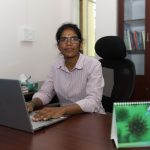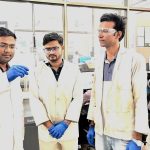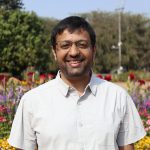Govardhan Reddy’s lab seeks to understand how riboswitches work
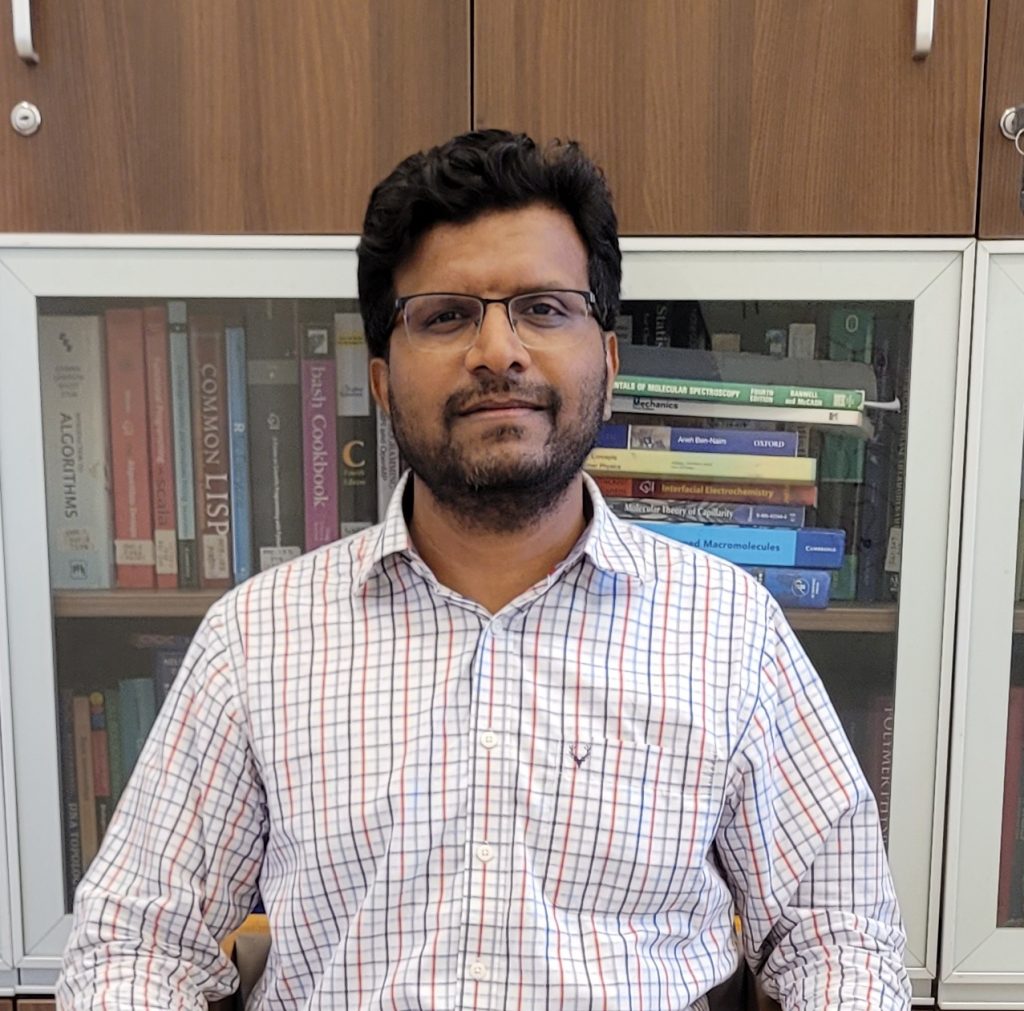
Govardhan Reddy’s career path started as it does for a large number of youngsters in India – with an aspiration to join an IIT. And so he did, by taking up the five-year MSc programme in Chemistry at IIT Bombay. “But I wasn’t sure if I liked chemistry or not yet,” Govardhan recalls of his early years.
At IIT Bombay, he was exposed to maths, physics, chemistry, humanities, engineering, and even economics. There was also one biology course – biophysical chemistry. “I did not appreciate the course at that time, but it was good training for my interdisciplinary research later.”
After graduation, he was conflicted about whether to pursue a PhD or pick up a job. He opted for the former, joining the theoretical chemistry programme at the University of Wisconsin-Madison in the USA. “I liked the analytical path more than the experimental one. I enjoyed the puzzle-like nature of the problems,” he explains. He became interested in using computational tools to understand the structure and function of different kinds of liquids and polymers.
It was only during his postdoctoral research on proteins at the University of Maryland, USA, that he encountered biology again – a subject that he had once underappreciated now piqued his interest. “Proteins are complicated polymers. So, it was a natural progression across the fields and was a seamless transition because of the basics that I already knew.”
The transition made him realise that he needed to open himself up to other subjects. This realisation remained with him when he joined as a faculty member at the Solid State and Structural Chemistry Unit, IISc – his office cupboard and desk overflow with books on topics ranging from chemistry to statistical mechanics, maths and programming. “I read a lot; that clears my mind and makes me gravitate towards that field,” he elaborates.
Govardhan’s lab works in the field of biophysical chemistry and biophysics, using computational techniques and theoretical calculations. “What’s fascinating about biological problems is that they operate on multiple time scales. For example, the time a biological molecule can take to change its structure can be in the order of microseconds, milliseconds, or even less,” he explains. But there are challenges. Each experimental technique that involves studying a biomolecular system operates on a specific time scale and one technique might not be enough to unravel the complexity of the system in terms of its structure and interactions with other systems.
This challenge gets compounded when studying proteins because they are heteropolymers. Modelling homopolymer properties is relatively easy because the building blocks are identical. A protein, on the other hand, can have twenty different types of monomers (amino acids) as building blocks. These amino acids interact in a multitude of ways via a complex interplay of weak interactions (van der Waals and hydrogen bonds) and strong interactions (electrostatic interactions and disulphide bonds). Solvents, pH, and salts further modulate these interactions. It is not easy to recreate these interactions accurately in various conditions and simulating the structural transitions in biomolecules for time scales relevant to their function in computer simulations. “We need to find an appropriate balance of these interactions to model the folding and functioning of biomolecules,” Govardhan says.
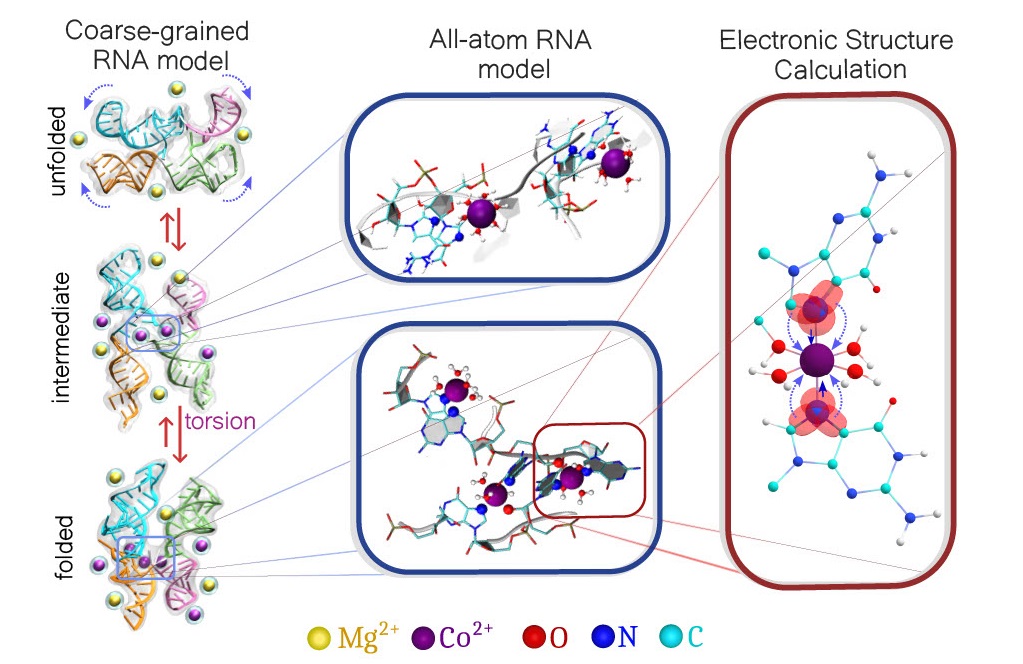
Decoding riboswitches
Govardhan’s lab is currently working on riboswitches, which are RNA structures present in the noncoding region of messenger RNA (mRNA) and regulate gene expression (transcriptional and translational processes) to maintain the concentration of critical metabolites and metal ions in bacteria.
The solution that fills the inside of bacterial cells (cytoplasm) is not an ideal solution; there are different metal ions and metabolites present in it. For example, magnesium ions are present in millimolar concentrations, while transition metal ions, such as cobalt ions, are found in micromolar concentrations. What makes riboswitches special is their high specificity to bind to their respective ligands in such a solution. A riboswitch controlling cobalt concentration has to specifically bind to the cobalt ions from a pool of other ions, and signal the synthesis of proteins which help flush out excess cobalt ions from the bacterial cells.
There are riboswitches that act as ON and OFF switches for transcription and translation respectively. The code for a transcriptional riboswitch is located on the DNA just before the gene which is responsible for regulating the concentration of a metabolite or metal (target substrate) in the cell. When the DNA is “read” by the enzyme RNA polymerase to synthesise mRNA, the sequence of the riboswitch is initially synthesised.
Two things can happen depending on the concentration of the related metal ions or metabolites that bind to the riboswitch. If the concentration is low, the riboswitch folds into a structure with a terminator helix, which prevents further transcription (reading) of the gene by RNA polymerase. If the concentration is high, the ion or metabolite binds to the riboswitch, and it folds into another structure with an anti-terminator helix, which promotes the transcription of the gene and eventually translation to synthesise proteins, which flush out the excess metabolite or metal in the cell.
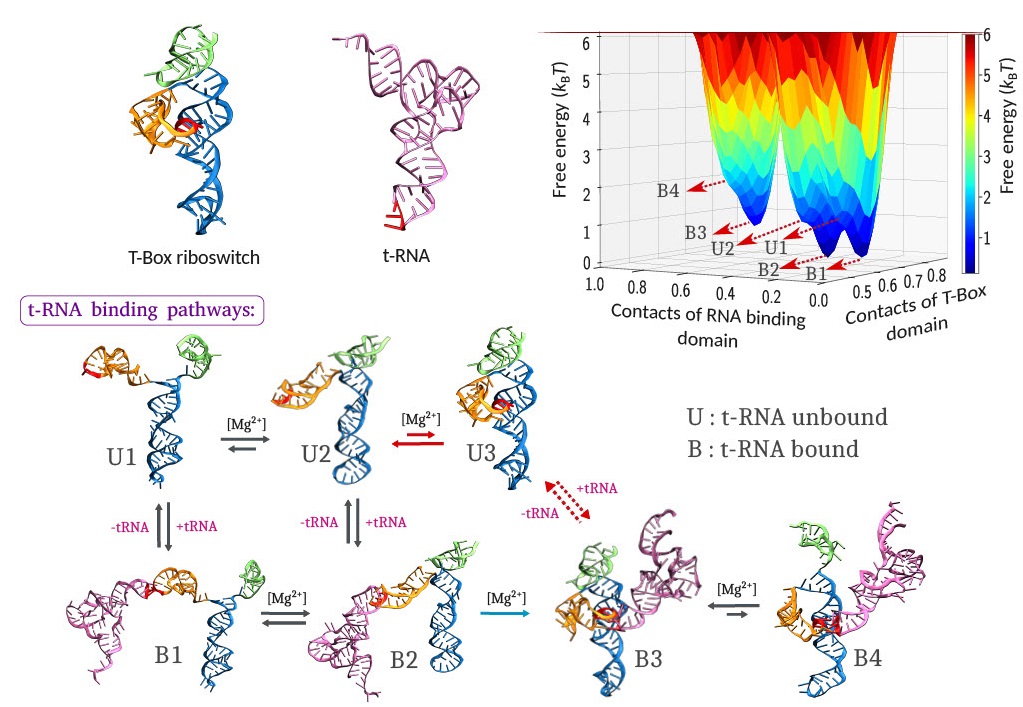
“Understanding how the riboswitches function is beautiful because multiple processes are involved here. The riboswitch sequence is synthesised at a specific rate by the RNA polymerase, and it is simultaneously folding as it is being synthesised at a different rate. The rate at which the ligand binds to the folding riboswitch influences whether the anti-terminator or terminator helix is populated, dictating whether the transcription should proceed or terminated. So, different timescales are at play. And all of this must fall in place for the bacteria to survive,” explains Govardhan. His lab uses a combination of computer models and statistical analyses to study these various processes.
Since riboswitches are present exclusively in bacteria – they are now recognised as targets for developing antibacterials. Understanding the mechanism of riboswitch functioning can lead to the invention of a new class of antibacterials. However, designing new molecules to target riboswitches is not trivial. Riboswitches have evolved to detect specific cognate ligands that bind in the pockets or crevices formed in the folded structure. Designing a drug molecule that can compete with the cognate ligand in binding to the same pocket or crevice and inhibit the riboswitch function is a challenge.
Since riboswitches bind to specific ions, they are used to develop ion sensors. Scientists have developed fluoride ion sensors using riboswitches that can detect excess fluoride, a major challenge in most cities’ water supply.
While Govardhan is passionate about his research, he also believes strongly in work-life balance. “I was the hockey secretary at IIT Bombay, and picked up squash during my time at Madison,” he recalls. He routinely advises his students to have at least one hobby to let off steam.
Another piece of advice he has is to be persistent. “You cannot solve a problem by treating it as a 9-to-5 job. One needs to actually like the problem and think about it constantly to solve it,” he remarks.


